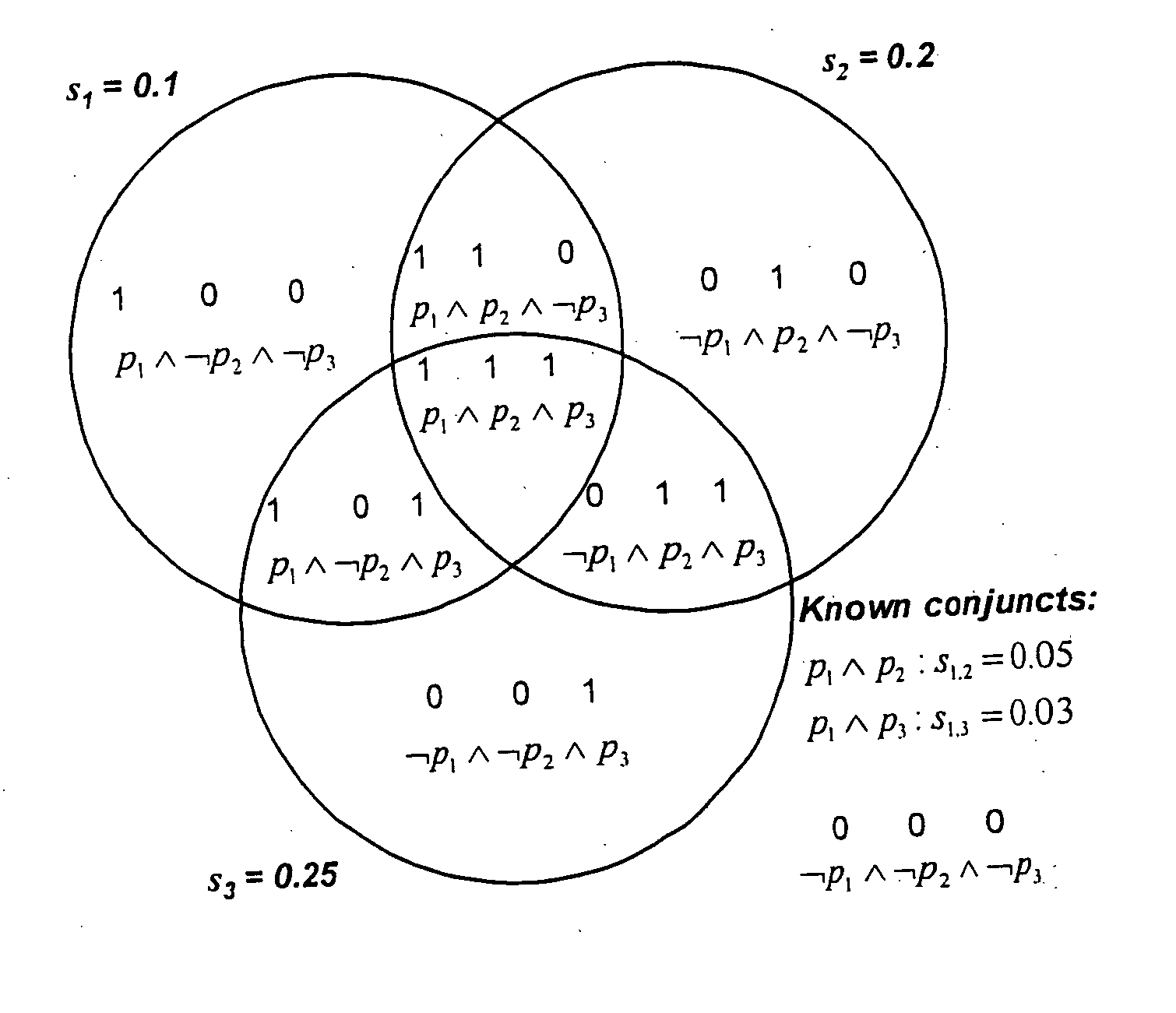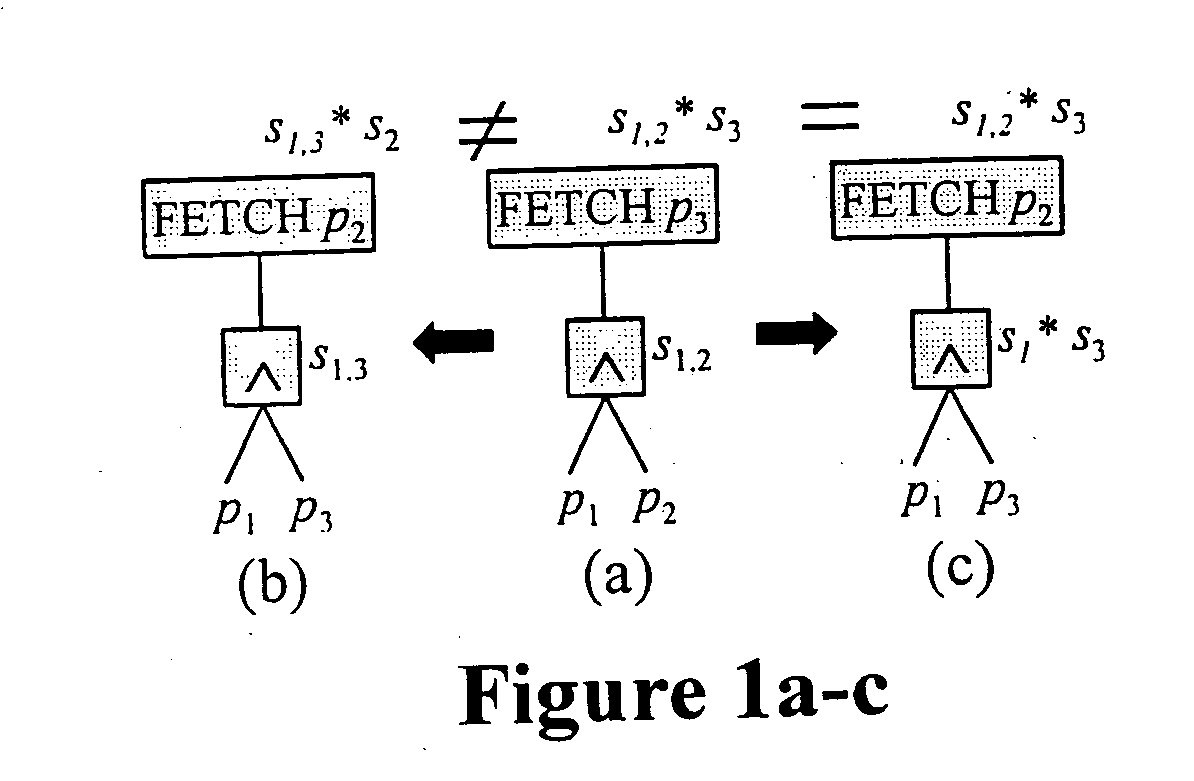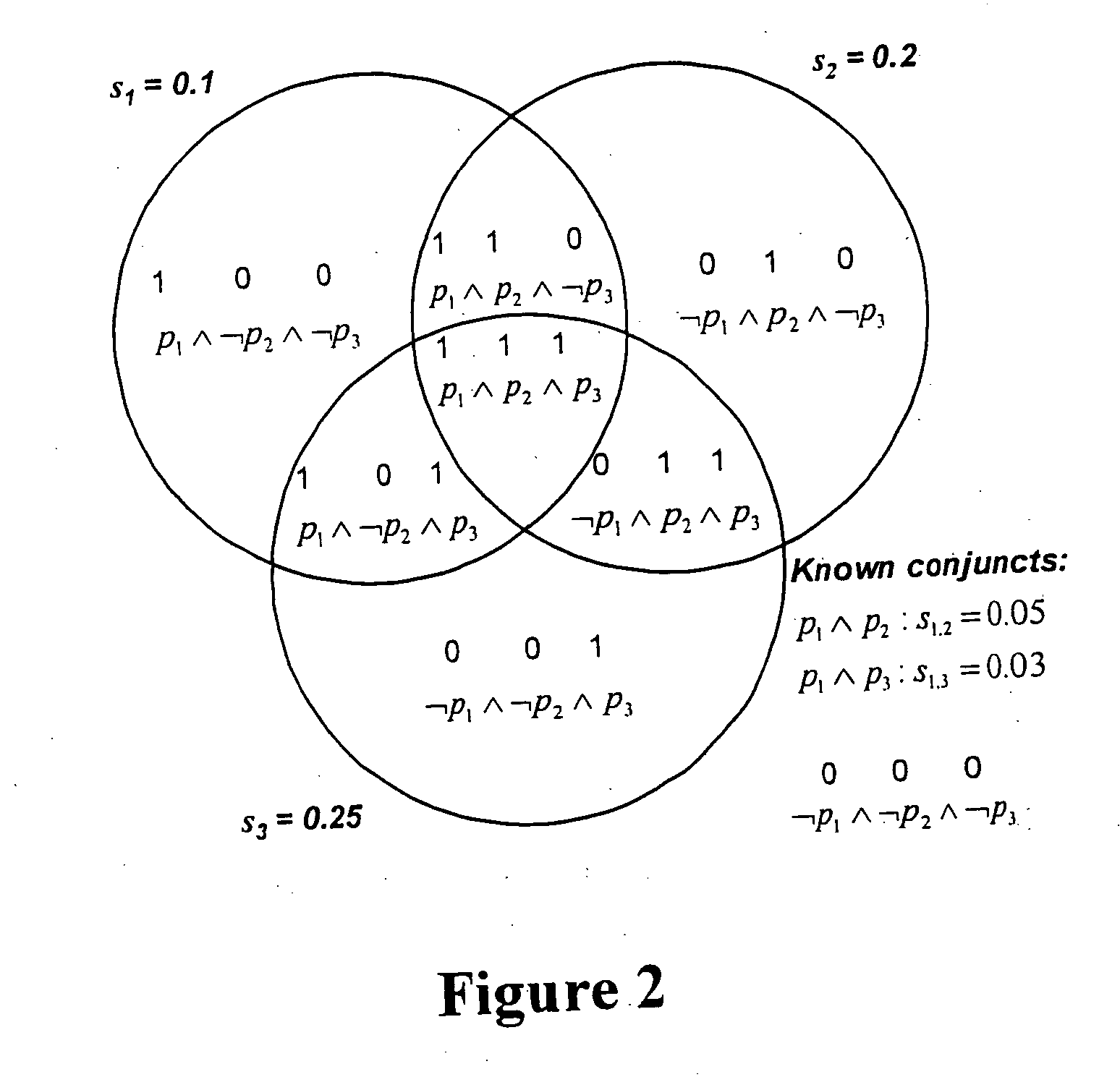Selectivity estimation for conjunctive predicates in the presence of partial knowledge about multivariate data distributions
- Summary
- Abstract
- Description
- Claims
- Application Information
AI Technical Summary
Benefits of technology
Problems solved by technology
Method used
Image
Examples
embodiment
The Newton—Raphson Embodiment
[0058] Shown in FIG. 5 is the Newton-Raphson algorithm embodiment of the present invention. In this embodiment, the constraint optimization problem is solved in its general form making use of the Newton-Raphson algorithm to numerically find a root of a complicated function or curve. Newton's method relies on the observation that this tangent line often intersects with the x-axis at a closer approximation to the function's root. Hence when trying to seek any f(x)=0 one often can find a better approximation to the root by: xi+1=xi-f(xi)f′(xi)
where xi is initialized with an initial guess. Applying this formula continuously on the obtained xi+1 will result in a convergence of the x-value, and in a final guess of the function's root. When solving the constraint optimization problem the following set of equations are utilized: ln xb+1-∑{λX|p(b)}-λΩ=0(8)∑b∈C(X)N xb-sX=0(9)
[0059] These equations represent optimality conditions for the Maximum Entropy o...
PUM
 Login to View More
Login to View More Abstract
Description
Claims
Application Information
 Login to View More
Login to View More - R&D
- Intellectual Property
- Life Sciences
- Materials
- Tech Scout
- Unparalleled Data Quality
- Higher Quality Content
- 60% Fewer Hallucinations
Browse by: Latest US Patents, China's latest patents, Technical Efficacy Thesaurus, Application Domain, Technology Topic, Popular Technical Reports.
© 2025 PatSnap. All rights reserved.Legal|Privacy policy|Modern Slavery Act Transparency Statement|Sitemap|About US| Contact US: help@patsnap.com



